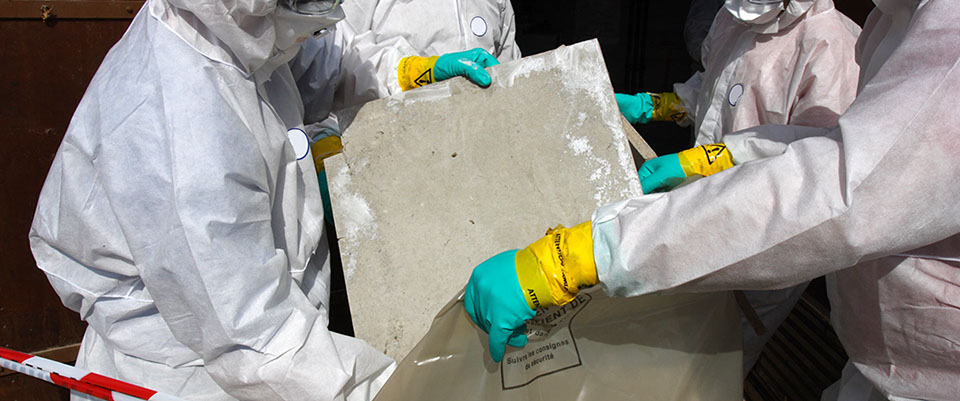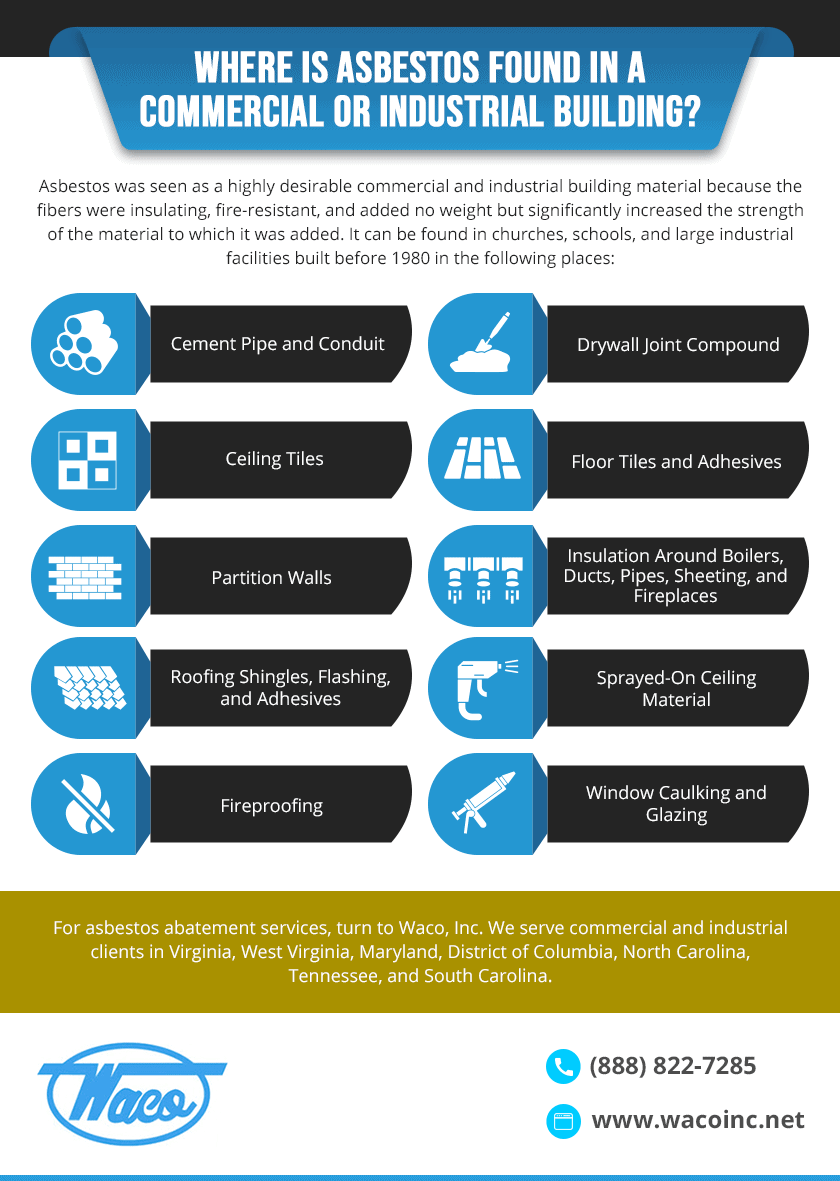Where Is Asbestos Found?

Asbestos is a material that poses little risk when undisturbed. However, this naturally occurring mineral can release microscopic fibers into the air when disrupted, making it very dangerous if ingested or inhaled. The fibers enter the body and lodge in the lining of the chest, abdomen, and heart cavity. Over time, it causes irritation and life-threatening conditions such as lung and pulmonary disease and mesothelioma. In this blog, we’ll answer some of the most common asbestos questions to give you a thorough overview of this material.
Where Is Asbestos Found in a Commercial or Industrial Building?
Click to Expand
 Asbestos was seen as a highly desirable commercial and industrial building material because the fibers were insulating, fire-resistant, and added no weight but significantly increased the strength of the material to which it was added. It can be found in churches, schools, and large industrial facilities built before 1980 in the following places:
Asbestos was seen as a highly desirable commercial and industrial building material because the fibers were insulating, fire-resistant, and added no weight but significantly increased the strength of the material to which it was added. It can be found in churches, schools, and large industrial facilities built before 1980 in the following places:
- Cement pipe and conduit
- Drywall joint compound
- Ceiling tiles
- Floor tiles and adhesives
- Partition walls
- Insulation around boilers, ducts, pipes, sheeting, and fireplaces
- Roofing shingles, flashing, and adhesives
- Sprayed on ceiling material
- Fireproofing
- Window Caulking and Glazing
Products Containing Asbestos
Asbestos is included in a variety of products, including:
- Brake linings and clutch pads
- Ceiling tiles
- Floor tiles
- Joint compound
- Sprayed-on fireproofing and insulation in buildings
- Putties, caulks, and cements, such as in cement pipes used for carrying chemicals
- Fume hoods and lab benches
- Wall and ceiling texture
- Insulation for ducts, pipes and boilers
- Siding shingles on commercial and residential buildings
- Roofing shingles
- Wall and ceiling insulation
- External siding
Where Is Asbestos Found in a Home?
Homes built after the 1920s and before 1980 likely have some form of asbestos. Even floor tile installed in the 1980’s may be asbestos containing. It was used in a variety of building materials until the danger was recognized, and the mineral was regulated for most uses. Structures that have not already undergone some type of remodeling and asbestos remediation may still have asbestos-containing materials inside or outside the building, including the following.
- Inside
- Backing of vinyl sheet floor coverings
- Carpet adhesive
- Compressed asbestos sheets
- Fireplace flues
- Insulation below a wood heater
- Internal walls and ceilings
- Loose-fill attic insulation
- Vinyl floor tiles
- Pipe Insulation
- Transite panels
- Outside
- Backing for electrical meter boards
- Eaves and gables end
- Insulation for hot water pipes and tank
- External building siding
- Roofing Materials
Is Asbestos Still Used Today?
Asbestos became highly regulated in the U.S. between 1973 and 1990. Gaskets, brake pads, and some products containing less than 1% asbestos are exempt and still sold in America. The exemption states that warning labels aren’t necessary for products containing less than 1% asbestos or those that will not release asbestos fibers within normal use. The list of products regulated in the U.S. include:
- Asbestos wall compound
- Asbestos fireplace decorations
- Asbestos filters for pharmaceutical manufacturing
- Asbestos flooring felt
- Asbestos paper products
- Friable asbestos pipe and block insulation
- New uses of asbestos after August 25, 1989
- Spray-on coatings containing more than 1% asbestos
Industry Leading Asbestos Abatement Services
Asbestos abatement requires skill, training, and experience. Since 1979, Waco, Inc. has successfully removed asbestos in thousands of private residences and commercial facilities. We are proud to be recognized as an industry leading environmental contractor in the development and completion of asbestos removal and disposal, and we serve Virginia, West Virginia, Maryland, District of Columbia, North Carolina, Tennessee, and South Carolina. Contact us today if you have questions about our services or submit a quote request for your project.



Comments are closed